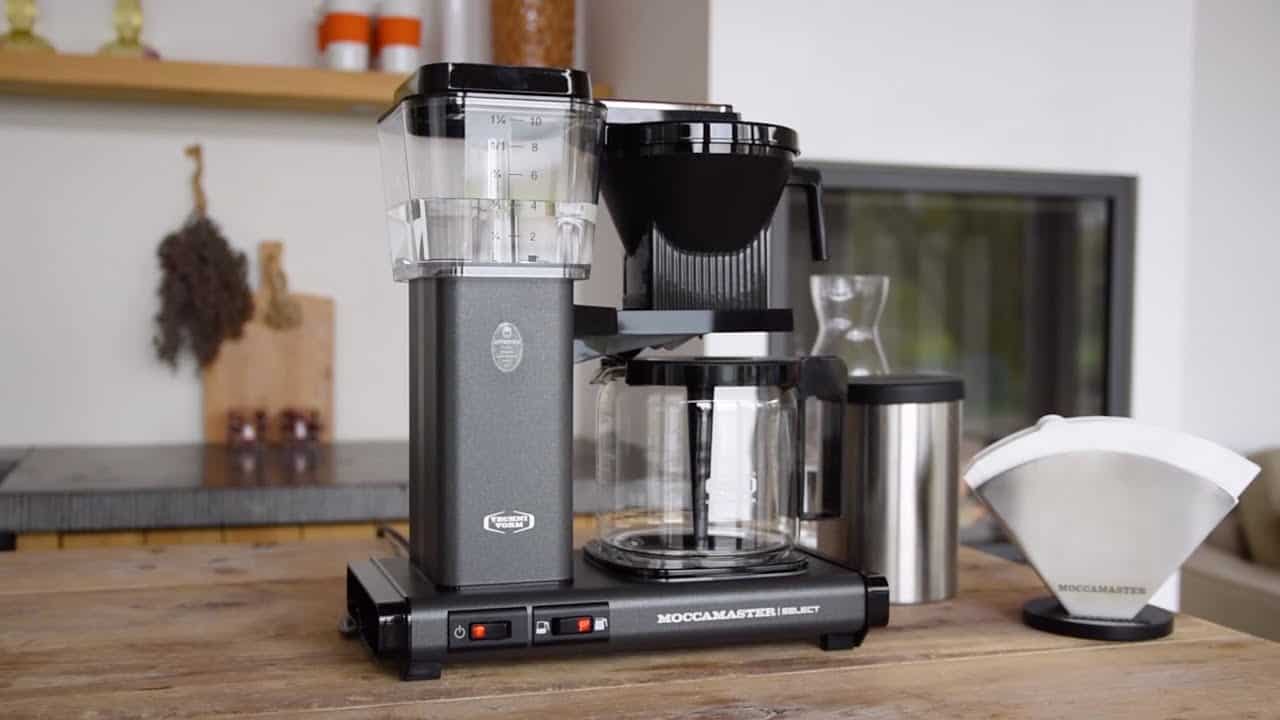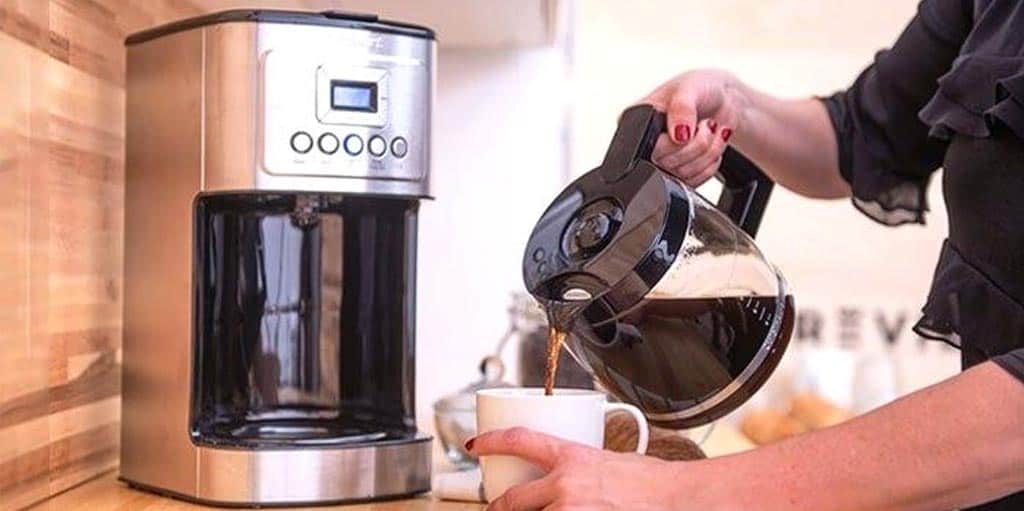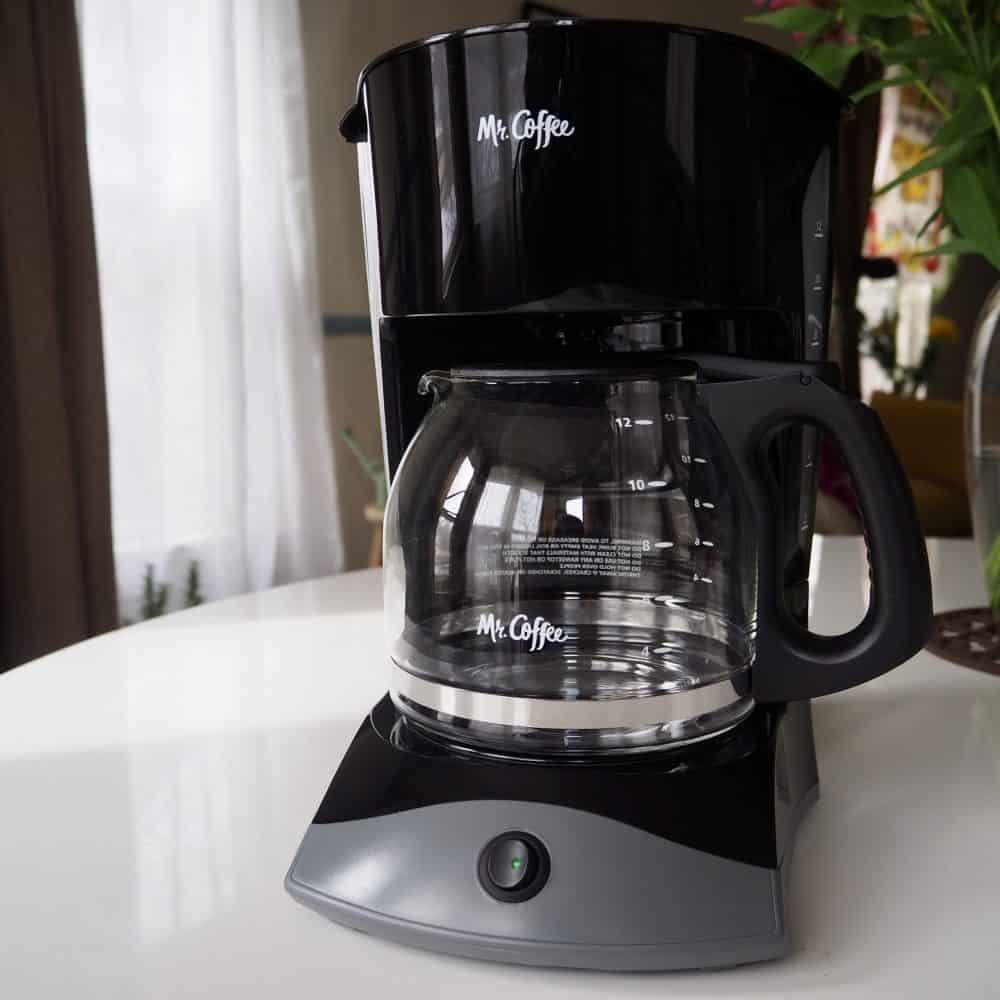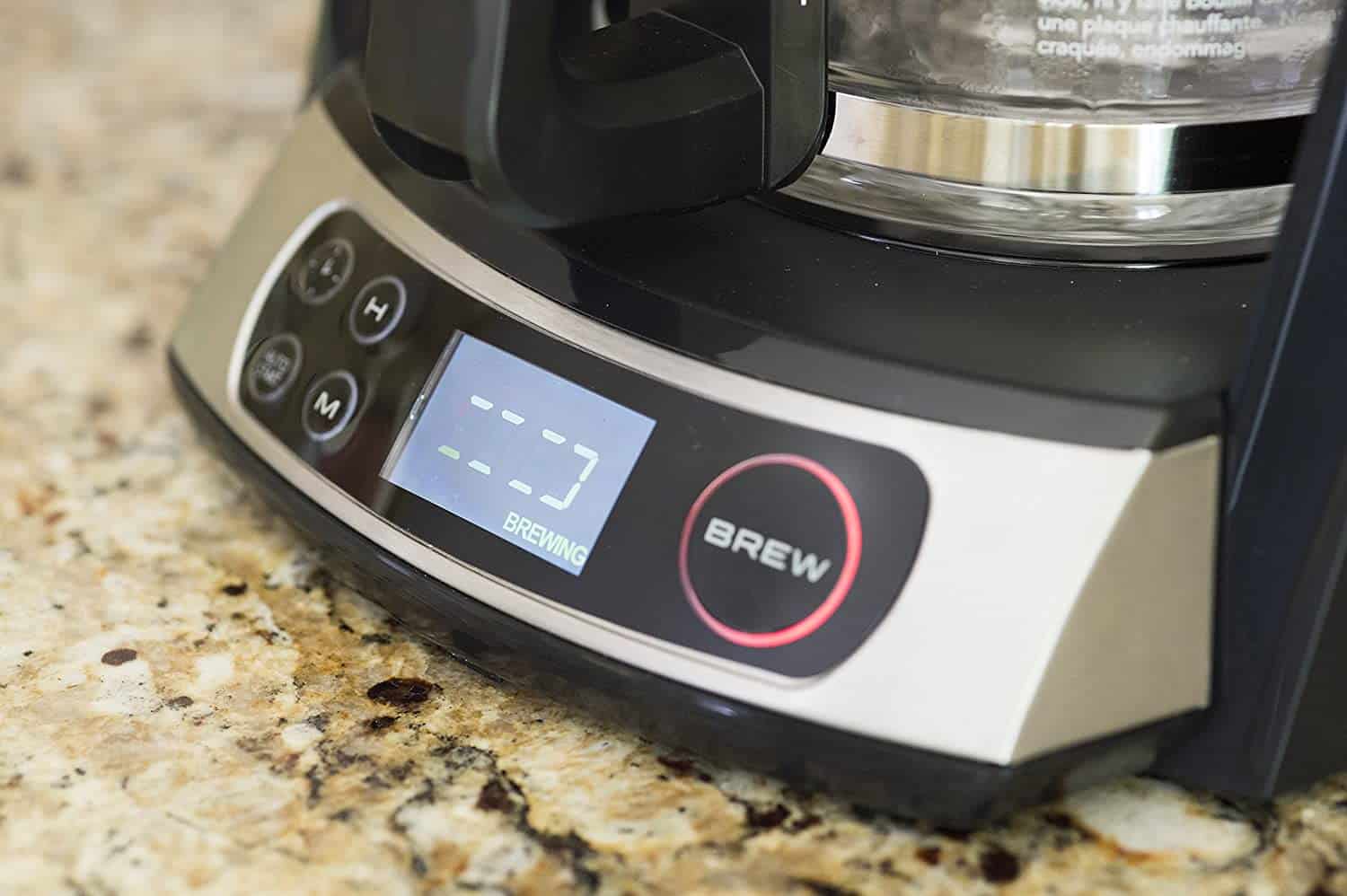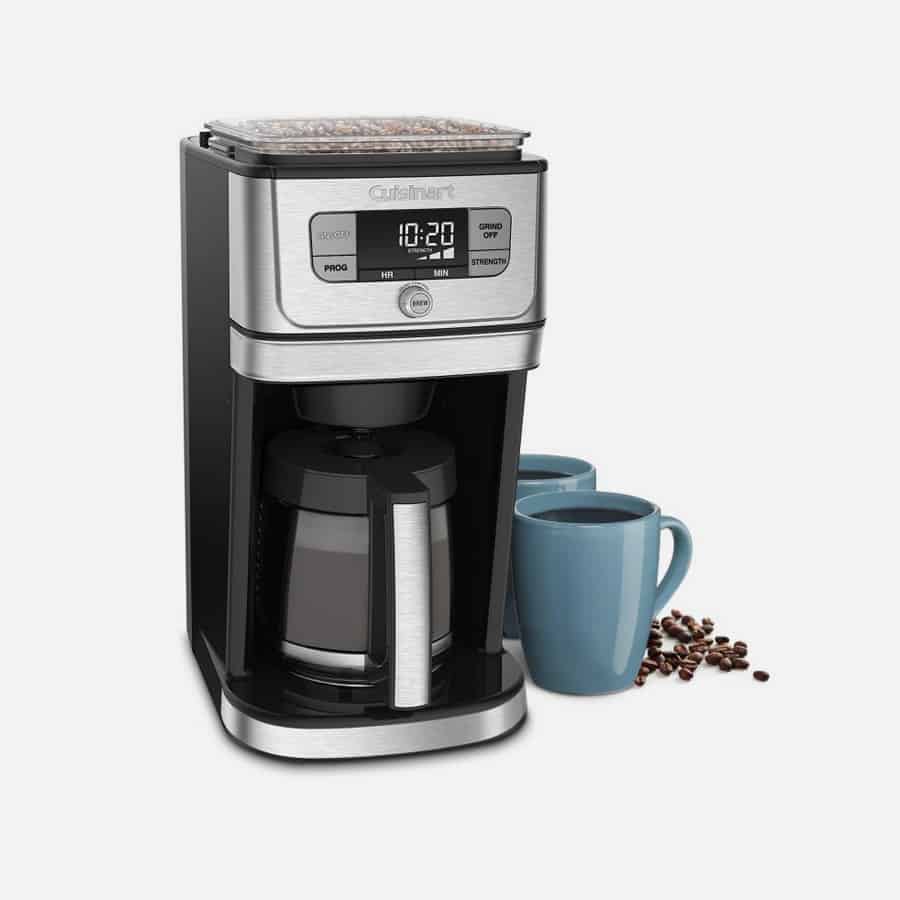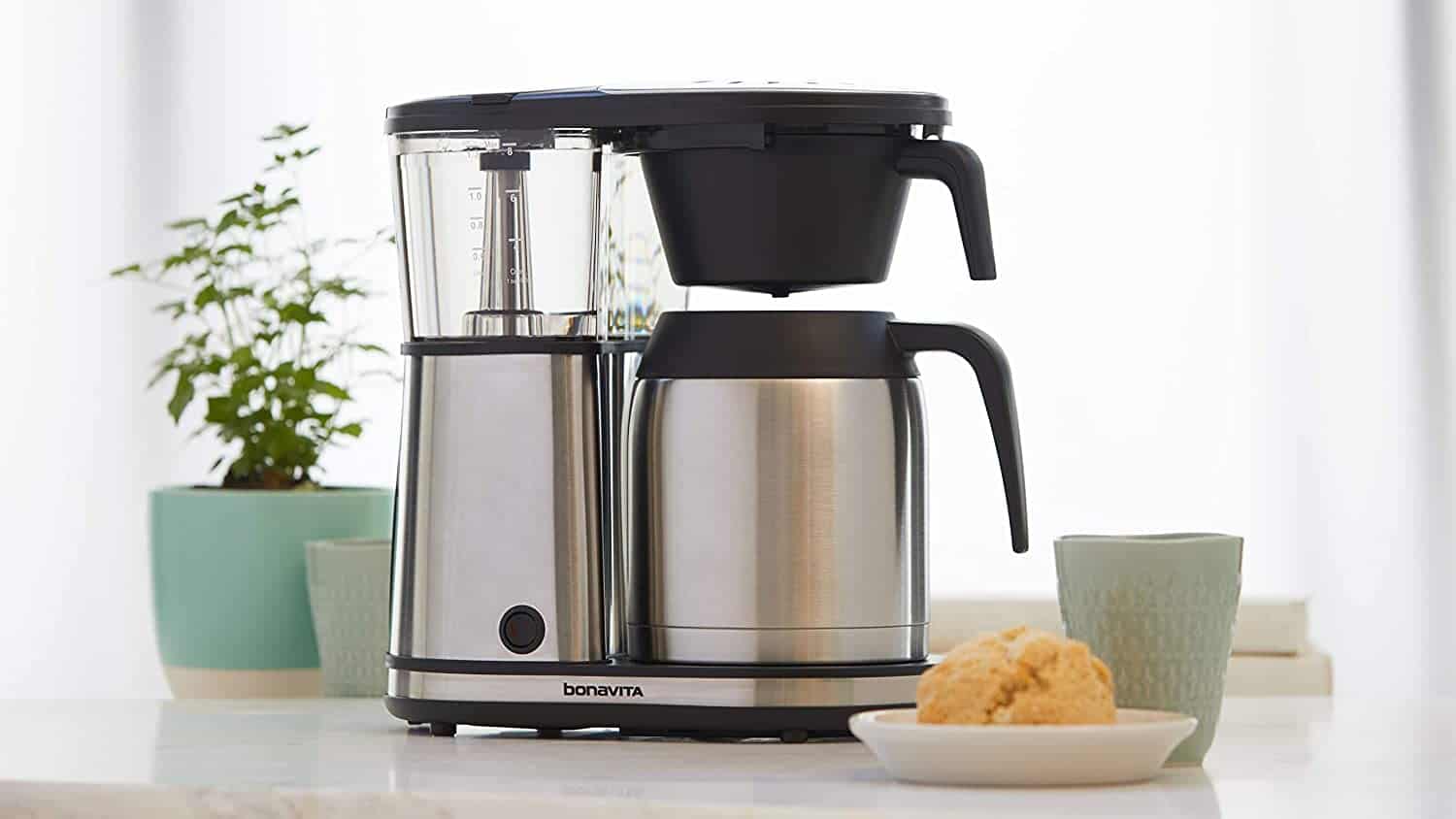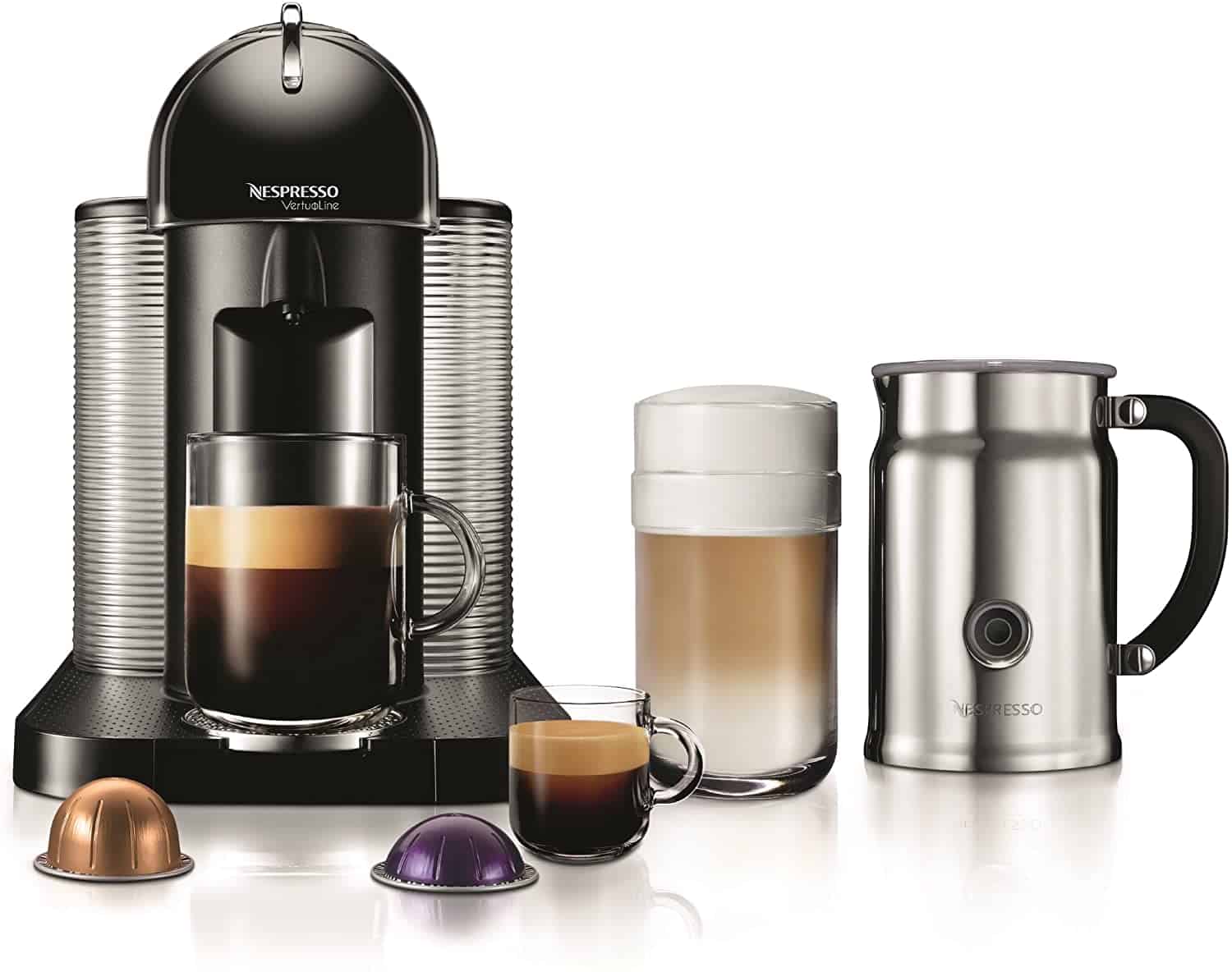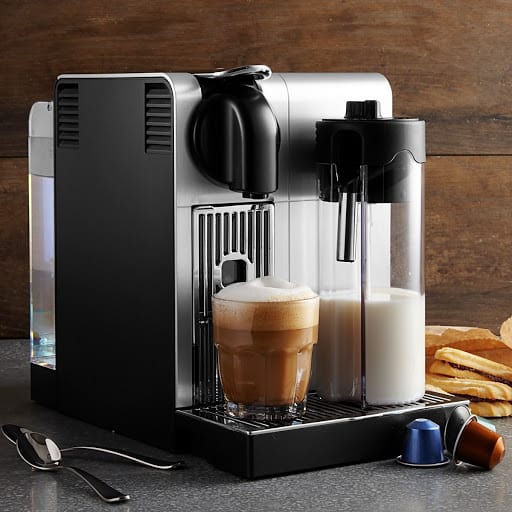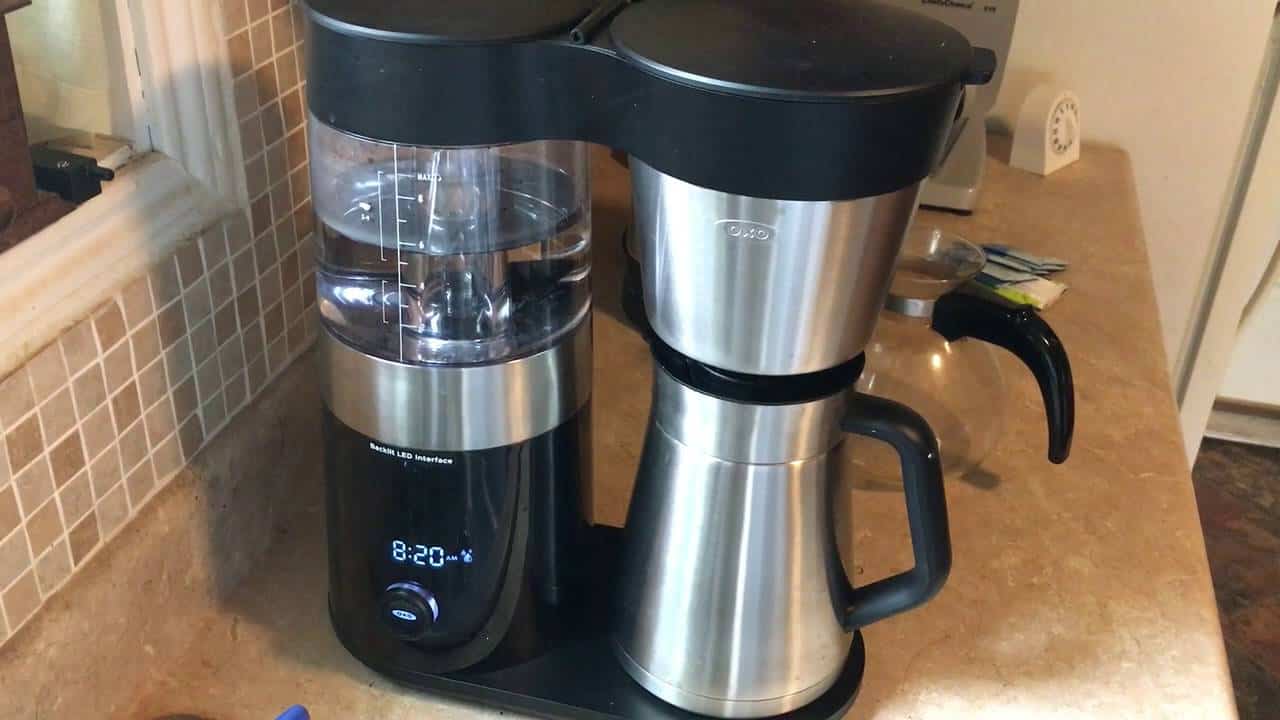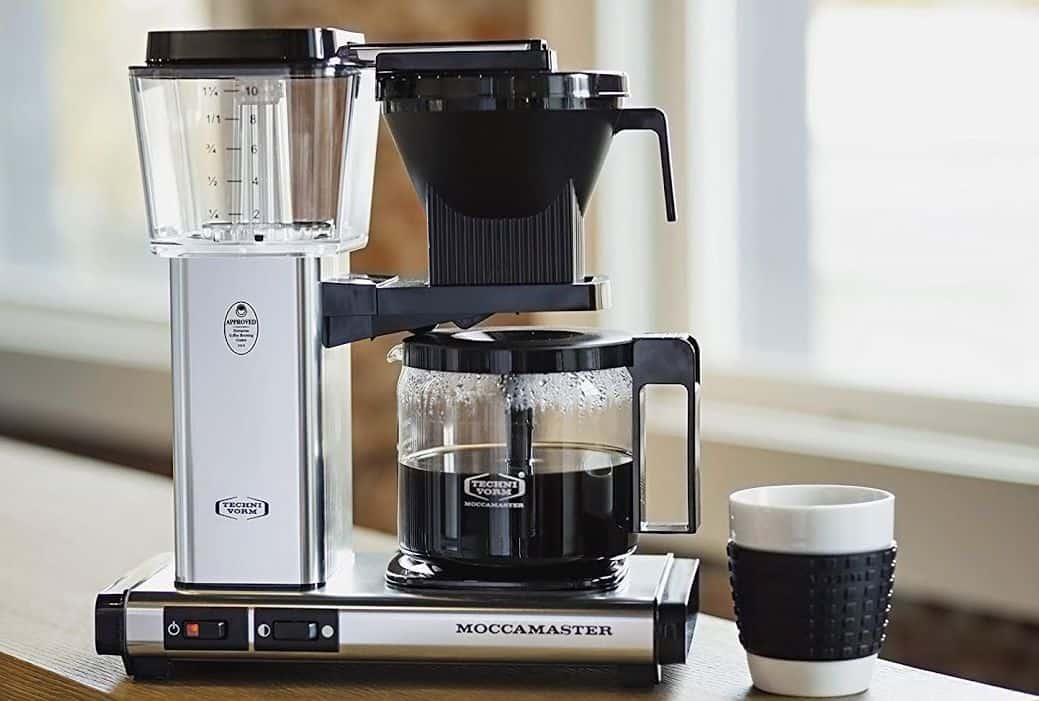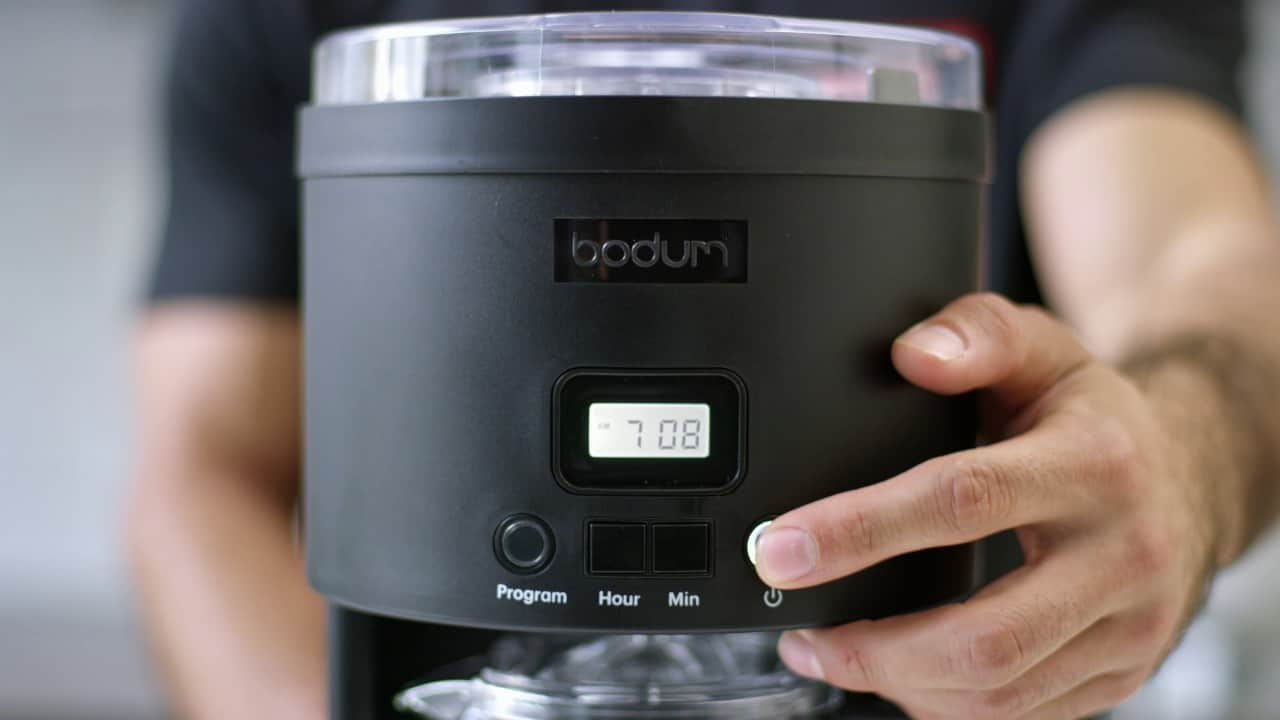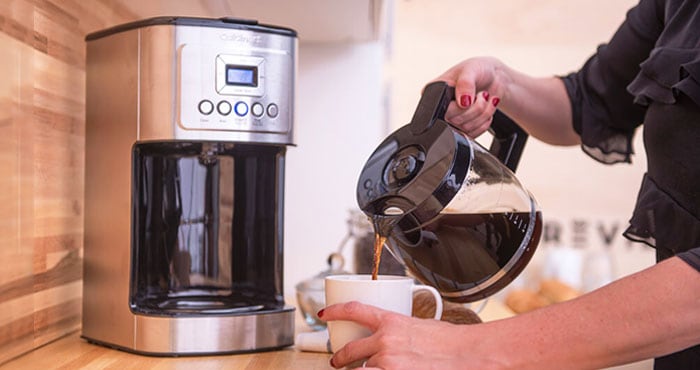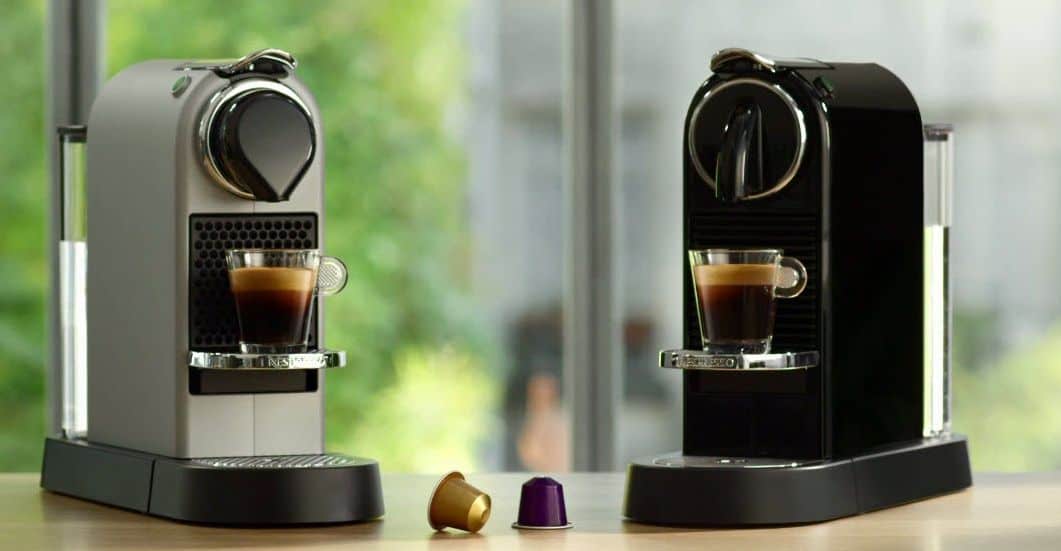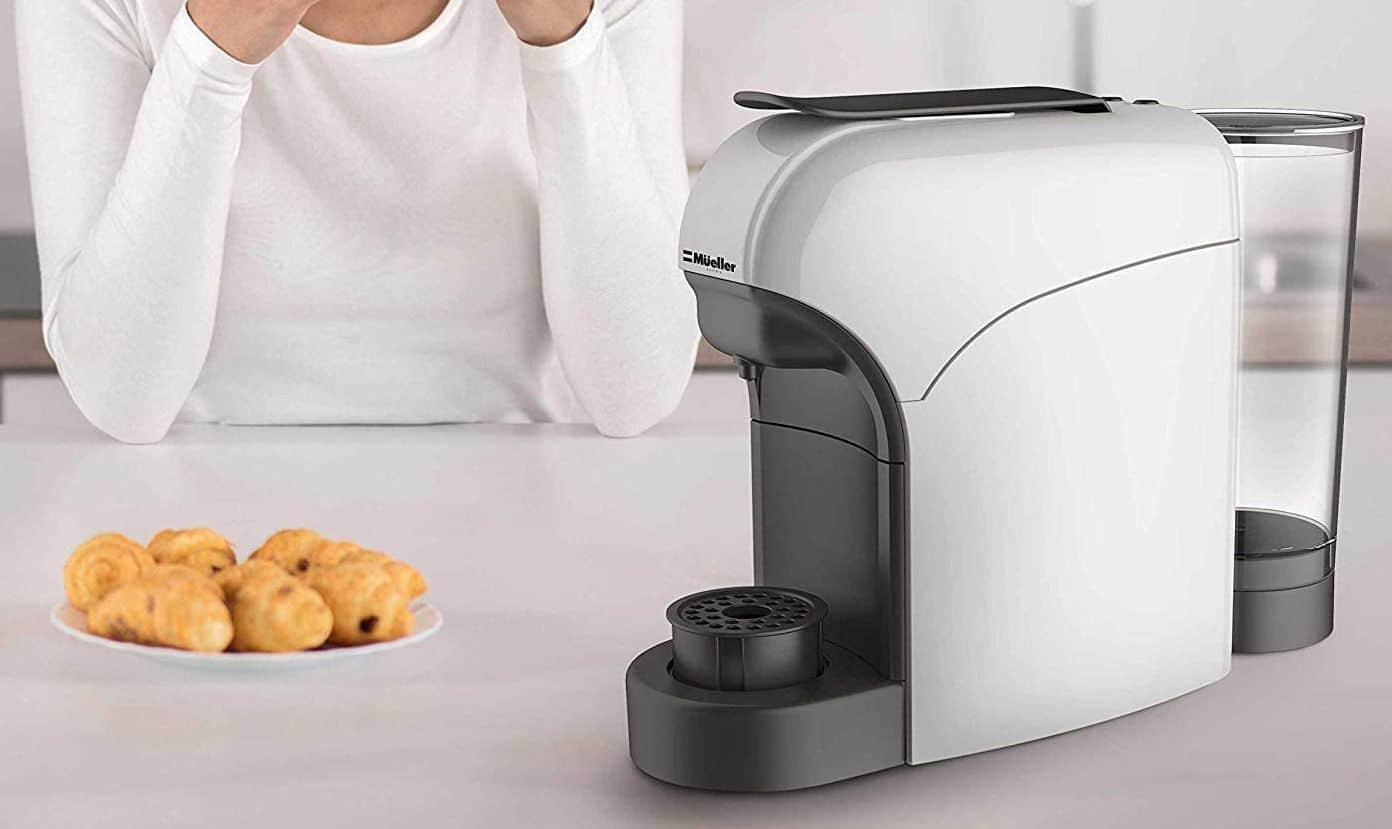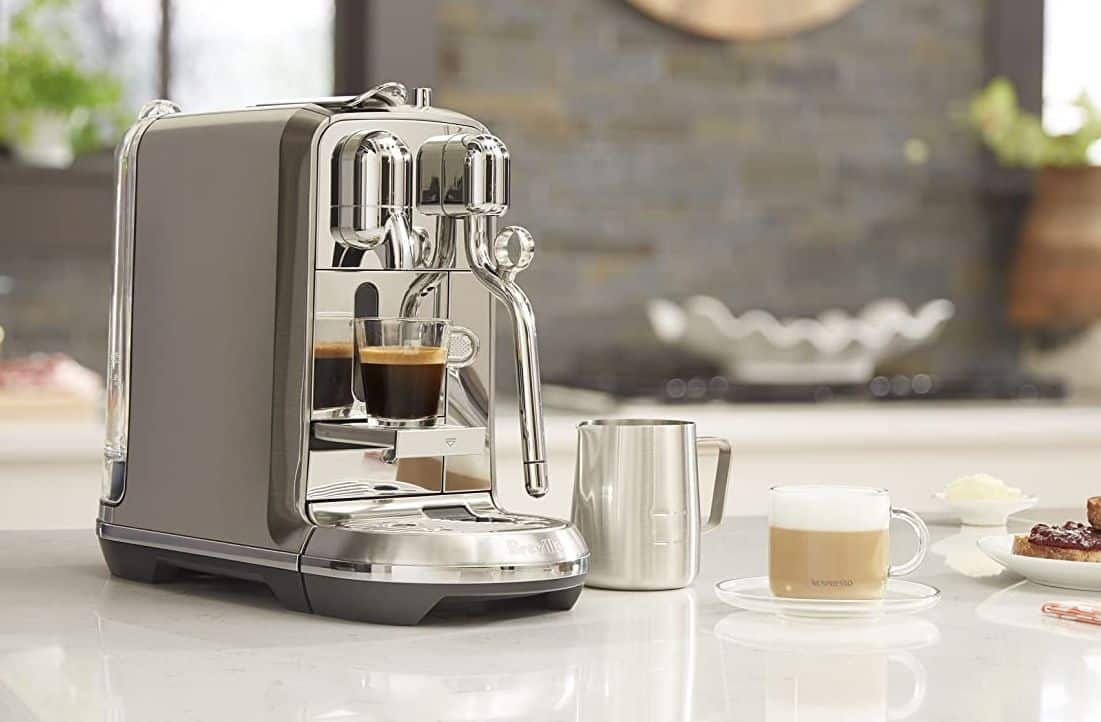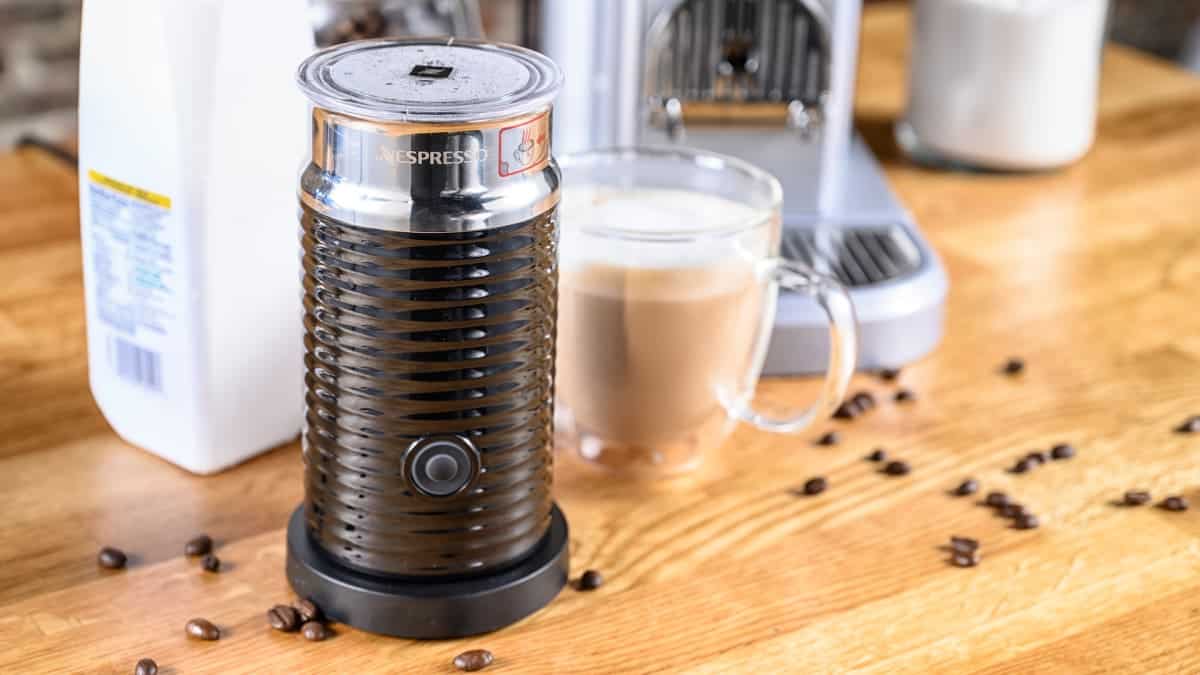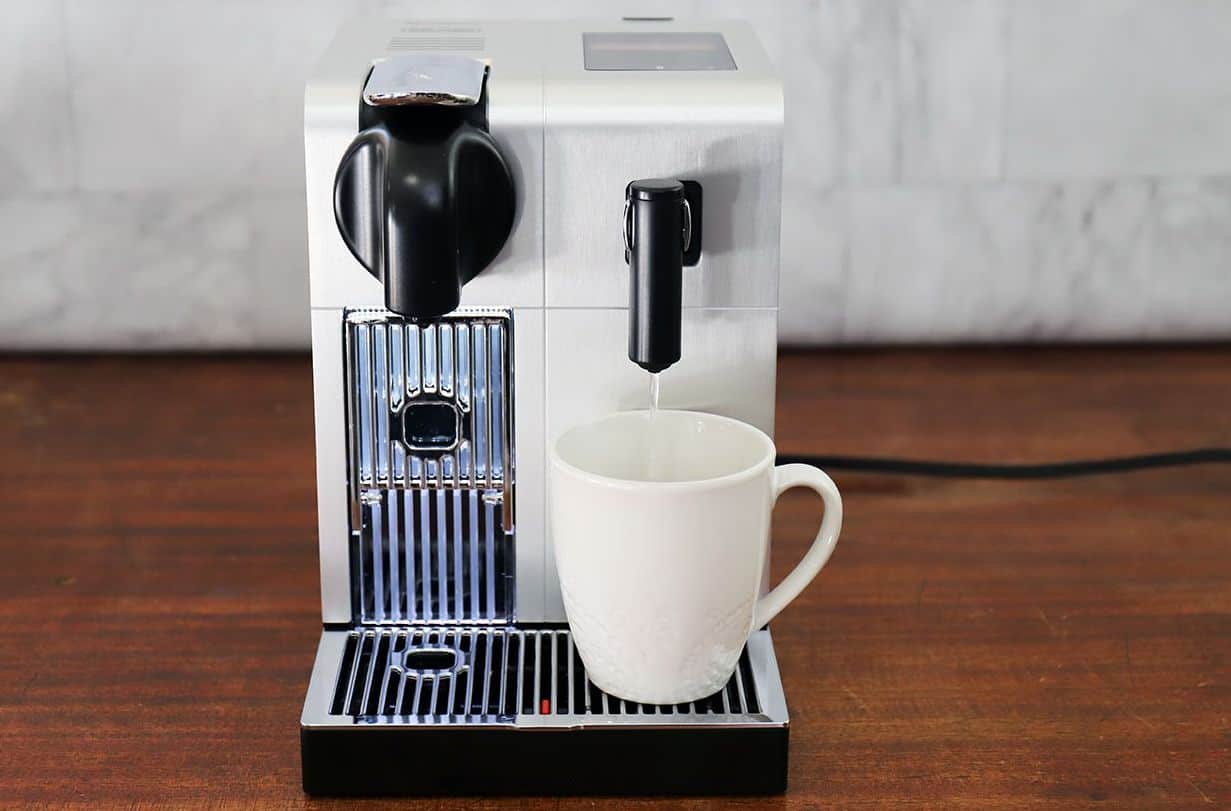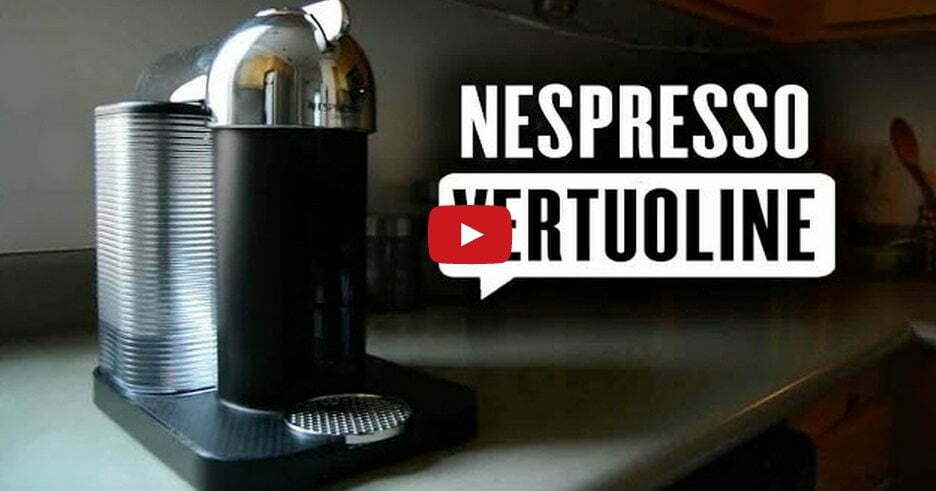If you’re shopping for the best beginner espresso machine, there’s a good chance that you’re ready to graduate from drip coffee or want to expand your coffee repertoire to include slightly more complex milk-based drinks. Which coffee machine you choose will largely be informed by your experience with making espresso and other specialty coffee drinks, so think about whether you want a manual, semi-automatic, fully automatic, or super-automatic espresso machine.
In general, a beginner-friendly espresso machine should be easy to use with a minimal learning curve. You also want a machine that can brew consistent shots of espresso and steamed milk. Also consider whether you’re solely focused on brewing espresso, or if you want the option to make lattes, cappuccinos, or even macchiatos, too. This will determine whether you should buy a single or dual boiler machine.
Espresso makers come in a wide array of sizes, so where you’ll place your machine is another factor. Smaller kitchens or workspaces will benefit from a compact model, but if you have more space, you can invest in larger espresso makers with enhanced functionality.
Keep reading our beginner espresso machine buying guide to learn more. Just starting your coffee maker search? Check out our guide to selecting the best coffee maker you can find.
Top Beginner Espresso Machines
#1 Nespresso Vertuo Espresso Machine
Award: TOP PICK
WHY WE LIKE IT: This automatic option removes the hassle of having to hand-pour your cup. It has a versatile design, so you can make any style of beverage you would like. You’ll enjoy the Smart technology that makes everything easier.
- Is an automatic option
- Has a Versatile design
- Features Smart technology
- Might have too much foam
This is an automatic option that removes the need for hand-pouring. It creates barista-grade coffee. You’ll be able to make cappuccinos, mochas, lattes, americanos, and more in the comfort of your own home. It creates a personalized experience by making a single cup of espresso at a time, so each cup is perfectly crafted. Depending on how much foam you like on your espresso, this might produce too much. Some consumers say they weren’t impressed with the foam output.
It’s a versatile coffee maker with four different options for cup size included. You’ll be able to make 5 and 7.77-ounce cups of coffee, as well as single and double espresso cups. This brand uses Centrifusion technology that scans barcodes on the pods you use. That means it automatically adjusts to ensure each brew is perfect for the style of coffee you’re looking to make. You’ll enjoy the high capacity of the 54-ounce water reservoir.
#2 Bonsenkitchen Espresso Machine
Award: HONORABLE MENTION
WHY WE LIKE IT: This option is fantastic for those not looking for an involved clean-up process. The design also quickly heats so you can get your cup made faster. You’ll love what a potent cup this high-pressure system produces.
- High-pressure system
- Fast-heating design
- Extremely easy to clean
- It might be a noisy option
A 20 bar high-pressure system allows this machine to provide stable, rich flavor extraction, a component essential to good espresso. It pulls from 1350 watts of power, making it a highly efficient model. You’ll also enjoy the easy milk frothing through the steaming wand that creates rapid production of milk foam. However, this espresso maker does have a bit of a reputation for being noisy. If you like having things super quiet, this model will not be a great fit.
The advanced heating system allows you to brew as quickly as possible. It uses a thermo block system to ensure heating is fast and even. Each cup of delicious espresso has a perfect layer of crema on top, enhancing your morning experience. Two thermostats adjust the temperature of your milk foam and water, so each is heated separately according to strict specifications. There is a removable drip tray and bubbler to make clean-up easy.
#3 Hamilton Beach Espresso Machine
Award: BEST FOR A PROFESSIONAL BREW
WHY WE LIKE IT: This highly advanced option produces cafe-quality drinks right in your own home. You’ll enjoy the no-fuss milk frother and steaming wand, allowing you to get the job done quickly. There is also an easy-to-fill water reservoir.
- Produces cafe-quality drinks
- Has a no-fuss milk frother
- Easy-to-fill water reservoir
- Uses a lot of plastic
If you’re looking for cafe-quality espresso, this is the best way to get it. It uses a powerful 15-bar Italian pump to extract espresso beans from your stock of choice. It’ll use both fresh coffee beans and pre-measure soft pods that you can buy for ultimate convenience. Unfortunately, the longevity of this model has to be called into question due to the high usage of plastic in the design. Plastic-based designs don’t last as long as competitors with stainless steel.
The no-fuss milk frother will allow you to perfectly steam and froth your milk for a more authentic brew. It’s an excellent system for ensuring your cup is sippable. The easy-fill water reservoir holds up to 40-ounces of water, so you have plenty to pull from before you have to refill it. It’s also removable, so you’ll have an easier time replenishing the water supply. Finally, you can make two cups of espresso simultaneously with this system.
#4 Mr. Coffee Automatic Dual Shot Espresso Machine
Award: BEST FOR MAKING CREAMY FROTH
WHY WE LIKE IT: The easy-to-use frothing arm will allow you to get your milk ready without any fuss. You’ll also enjoy the dark, rich espresso this machine pulls because of the 15-bar pump system it uses. There’s also a thermal block heating system.
- Has a 15-bar pump system
- Easy-to-use frothing arm
- Thermal block heating system
- Might be too large
This system features a fantastic frothing arm that allows you to create creamy milk and foam. You’ll be able to top off your latte, cappuccino, or americano perfectly every time. It also uses a 15-bar system to produce a dark, rich brew to make every cup you have equally as delicious. However, since this machine can create two cups simultaneously, it’s also much larger than competitors. Those without a lot of counter space might want to steer clear of this option.
You can use this system to make two cups of espresso at the same time since it offers dual-shot brewing. This makes it perfect for a couple or entertaining guests in your home. It pulls from 1250 watts of power, so it’s a high-power option that will quickly heat and produce as much espresso as you would like. The drip tray is removable for more convenient clean-up and will allow you to keep your brewing space clean.
#5 De’Longhi EC685W Espresso Machine
Award: BEST FOR COMPACT SIZE
WHY WE LIKE IT: This option has fully adjustable milk frothing so that you can totally customize every cup to your preferences. You’ll enjoy a compact, stylish design that comes in at 6” wide. You’ll be able to craft barista-quality drinks.
- Fully adjustable milk frothing
- Has a Compact, stylish design
- Makes barista-quality drinks
- Double-shot button is sensitive
You’ll enjoy the super stylish design of this model since it’s perfect for keeping on your countertop at all times. You won’t feel the need to pack it away. If you want to pack it up, it’s highly compact and can tuck away easily. The adjustable milk frothing system means you can customize both the foam and steam levels, making each cup barista-quality. Some consumers report that the double-shot button is rather sensitive and might wear out too quickly for their taste.
Brewing like a pro is super easy with this espresso machine. It’s high-powered and can quickly produce cups of espresso. There is an Automatic Flow Stop feature, meaning you’ll be able to dispense exactly the amount of espresso you want. There’s no guesswork involved when you brew with this espresso machine. The double-drip tray can be removed so that you can also accommodate taller cups.
#6 Gevi Espresso Machine
Award: BEST FOR LED DISPLAY
WHY WE LIKE IT: You’ll enjoy the thermoblock fast-heating technology the brand includes in this option. It also features a handy LED display with buttons so you can choose how many cups of espresso you want.
- Thermoblock fast-heating technology
- Features a handy LED display
- Uses a 20-bar pressure system
- Might be too small
The 20 bar high-pressure pump lets you extract espresso from coffee beans quickly and efficiently. This model pulls on 1350 watts of power. It’s a high-powered system that can produce your morning espresso without any fuss. It only takes around 45 seconds to make a cup of espresso. This model is, unfortunately, relatively small. Because of this, it might be too little to keep up with the espresso demand of some households.
You’ll enjoy the LED screen display, which tells you how many cups you’re about to make. The buttons on either side allow you to customize between one or two cups of espresso. This creates an effortless experience that’s intuitive for users. There is even dual control with two separate thermostats. These thermostats control the temperature you’re brewing milk and water with separately. This ensures an ideal consistency and temperature of both milk and water.
Beginner’s Guide to Beginner Espresso Machines
What is a Beginner Espresso Machine?
An espresso machine for beginners is usually a paired-down version of a traditional espresso maker. These machines may offer slightly less functionality but feature a gentler learning curve. The benefit of this is that you can slowly learn the art of making a perfect cup of espresso without being intimidated by the technical acumen required to master more robust espresso machines.
Similar to other product categories, you can find beginner espresso machines that are very basic in functionality and lack features such as a milk frother, or you can find models with enhanced support that can automatically make more complex drinks at the touch of a button. The type of machine you select is going to depend on your desire for certain types of coffee drinks, how hands-on you want to be during the brewing process, and how much space you have available to house a coffee machine.
Beginner Espresso Machines vs Other Espresso Makers
Beginner espresso machines can vary in complexity. And in some cases, “beginner” can be subjective, depending on your experience level with this appliance and the features you find most important. However, in general, beginner espresso machines tend to have fewer features than standard or professional level espresso makers.
Depending on your goals, you can find very simplistic espresso makers that do nothing more than brew espresso. And in some cases, if you like the idea of a more hands-on experience, you can find manual espresso makers that require you to create the pressure required to extract espresso from the coffee grounds.
Another commonality for beginner espresso machines is that they’re usually smaller than the higher-end models. While this won’t always hold, you’ll usually find that espresso machines that are promoted as beginner-friendly won’t take up your entire countertop.
How Beginner Espresso Machines Work
Espresso is brewed differently than traditional coffee — even though you can use the same beans to make both beverages. Traditional coffee is brewed using the drip method where hot water passes over coffee grounds to create coffee. In contrast, espresso relies on pressure to extract liquid as water passes through the coffee grounds. Espresso is usually brewed faster and relies on finer coffee grounds during the process.
The four most important parts of an espresso maker are the water source, heat source, portafilter, and pressurized pump. Espresso makers draw water either from a reservoir or direct water source using the pressurized pump. The pressure reaches roughly 130 psi (also listed as nine bars of pressure which is ideal for espresso-making) while the water is also being heated. The water is then passed over the coffee grounds in the portafilter — which is a removable container — and espresso is released into a waiting cup below.
Depending on the beginner espresso machine you select, your espresso maker can be a standalone option for simply brewing espresso or a comprehensive solution that does everything from grinding your beans to making steamed milk, and even automatically creating specialized drinks like macchiatos and cappuccinos.
Why You Should Buy a Beginner Espresso Machine
There’s nothing quite as aromatic as the smell of fresh espresso being brewed. And depending on your willingness to learn the art of being a kitchen barista, there are a lot of options out there to add to your kitchen gadgets.
Is a Beginner Espresso Machine Worth Buying?
- You Want to Save Money: If you routinely drop by your favorite coffee shop for a cappuccino or a latte, that adds up over time. With the money you spend every day on coffee, you can legitimately afford an espresso maker. And in no time that new machine in your kitchen will have paid for itself.
- You Want to Learn How to Make Espresso: Even if you’re not aiming for one of the more expensive espresso makers, learning how to make espresso can give you a new appreciation for coffee.
- You Want to Make a Variety of Coffee Drinks: The good thing is that even a basic espresso maker can be used to make a variety of drinks including macchiatos, lattes, and of course cappuccinos.
Why a Beginner Espresso Machine May Not Be for You
- You Don’t Drink Coffee: If you don’t drink any type of coffee — including espresso — then buying an espresso maker won’t make much sense.
- You Don’t Want to Learn How to Make Espresso: We’re not saying that learning to make espresso is too difficult, but some machines are more complex than others. If this is a crash course you don’t want to take, you might feel like investing in a beginner espresso machine is a bad idea.
- Your Kitchen is Small: Traditionally speaking, espresso machines aren’t tiny. While it’s possible to find a few that qualify as truly compact, you might not be willing to sacrifice the counter space just to say you own one. You might want to consider the best automatic pour over coffee makers instead.
How Long Will a Beginner Espresso Machine Last?
Espresso machines have a varied lifespan. In general, you can get at least five years of use out of them, with some machines lasting as long as 15 years. But the wide longevity range is because of a variety of factors — and of course user behavior.
First, the type of machine you own will determine your target lifespan. For example, fully automatic espresso machines tend to last the longest. Meanwhile semi-automatic, hard cap, and pod filter espresso machines all have an average lifespan of seven years. But if you opt for a drip filter coffee machine, you’ll be happy to get to six years before you need to replace it.
However, the brand can also impact your return on investment. Cheaper brands tend to have shorter lifespans whereas options such as the best Breville espresso machines are designed to be durable with premium materials. So for this product category, the adage “you get what you pay for” applies. While expensive doesn’t always equal long-lasting, there’s a general correlation between budget-priced espresso makers and shorter lifespans.
And of course, whether or not you perform routine maintenance will also impact how long your espresso machine will last. Just like with traditional drip coffee makers, mineral buildup can also take a toll on your espresso maker’s components. You should routinely clean your espresso maker after using it to remove excess coffee grounds as well as wipe down steam wands and portafilters. Also, engage in routine deep cleaning and descaling, and check the machine to make sure that the switches, pressure, and flow rates are working at optimal levels.
How to Choose a Beginner Espresso Machine
Espresso makers come in a wide variety of configurations, even at the beginner level. While some considerations are no different than with drip coffee makers, you also need to think about enhanced features, like automation, and confirm that your machine can reach the proper pressure levels to create a good cup of espresso.
Best Beginner Espresso Machines Key Factors to Consider
1. How often do you plan on making espresso?
If you’re only looking to make the occasional cup of espresso, it might not make sense to invest in a high-end model. Conversely, if you’re an avid espresso drinker and you plan on becoming an at-home barista, then picking a premium model with enhanced functionality might be a smart move.
2. Where will you put your espresso machine?
While you can find compact espresso makers, they’re usually not known for being tiny appliances. Consider where you plan on storing your espresso maker and how much space you’re willing to sacrifice to say you own one.
3. What type of espresso machine do you want?
This is one of the questions that determine how hands-on you want to be during the brewing process. You can find a manual espresso machine that isn’t powered by electricity. For these machines, your hand strength is required to produce the pressure needed to brew espresso.
On the other hand (no pun intended), you can also opt for semi-, fully, and super-automatic machines that do the heavy lifting for you. Semi-automatic espresso machines feature electric temperature controls and built-in pumps. However, you need to manually control the water flow.
Fully automatic machines have the same electronic features as a semi-automatic machine but also control the water flow. A super-automatic machine is in complete control of the brewing process, including a built-in grinder for the beans. And you can also opt for a capsule machine that relies on an espresso pod rather than loose coffee grounds to brew espresso.
4. What kind of heating system does the espresso maker have?
For automated espresso makers, you’ll need to decide whether you want a single or double boiler. The boiler style will determine how quickly your machine can heat the water and if it can simultaneously manage operations at different temperatures.
For example, if you want a machine that can also steam milk, you’ll want to ensure that you can brew espresso at the same time. Espresso brews at an ideal temperature between 195 to 205 degrees Fahrenheit. In contrast, milk must be frothed at a much higher temperature. If you want to froth milk and brew at the same time, you’ll want a double boiler espresso machine as a single boiler machine can’t support dual temperature control.
5. Do you want automated drink options?
Depending on your overall goals, you may or may not want this feature. If you want an espresso machine because you want to learn how to make coffee drinks from scratch, you may find this feature to be limiting. But, if you simply want to replicate your favorite coffee shop drinks to save money, you might prefer automated drink options.
6. Are cleaning and maintenance easy to do?
For best results, and to ensure that your investment lasts, you need to engage in routine cleanings. Make sure that you pick a machine that doesn’t require an engineering degree to disassemble for deep cleaning or routine maintenance checks.
7. What is the pressure output of the machine?
Espresso can only be brewed through pressure — which means you want a machine that can achieve the necessary levels required. The ideal pressure for espresso is nine bars of pressure or 130 psi. Any machine advertising pressure levels lower than this should be avoided.
8. Do you want a machine with a grinder component?
By default, this means you’re opting for a super-automatic espresso maker. But, considering that espresso-grade coffee grinds need to be fine, opting for a machine with this feature can give you peace of mind that you’re more likely to produce espresso that’s the right strength and texture. However, this means you could spend more money. If you’re not ready for that investment, consider adding a grinder to your shopping list and ensure that it can create the proper espresso-grade grind size.

![Best Beginner Espresso Machines in [year] 1 best beginner espresso machine](https://www.gadgetreview.dev/wp-content/uploads/best-beginner-espresso-machine-image.jpg)


![Best Beginner Espresso Machines in [year] 2 Nespresso Vertuo Coffee and Espresso Machine by...](https://m.media-amazon.com/images/I/41IbsRzC3gL._SL160_.jpg)
![Best Beginner Espresso Machines in [year] 3 Bonsenkitchen Espresso Machine 15 Bar Expresso Coffee...](https://m.media-amazon.com/images/I/41QqBH8UOjL._SL160_.jpg)
![Best Beginner Espresso Machines in [year] 4 Hamilton Beach 15 Bar Espresso Machine, Cappuccino,...](https://m.media-amazon.com/images/I/41wdXiVKkeL._SL160_.jpg)
![Best Beginner Espresso Machines in [year] 10 Our #4 Pick is the MR. COFFEE AUTOMATIC DUAL SHOT ESPRESSO MACHINE](https://m.media-amazon.com/images/I/41QgGypYRdL._SL160_.jpg)
![Best Beginner Espresso Machines in [year] 11 Our #5 Pick is the DE-LONGHI EC685W ESPRESSO MACHINE](https://m.media-amazon.com/images/I/41hdHZiIgeL._SL160_.jpg)
![Best Beginner Espresso Machines in [year] 12 Our #6 Pick is the GEVI ESPRESSO MACHINE](https://m.media-amazon.com/images/I/41kqooi9XyL._SL160_.jpg)


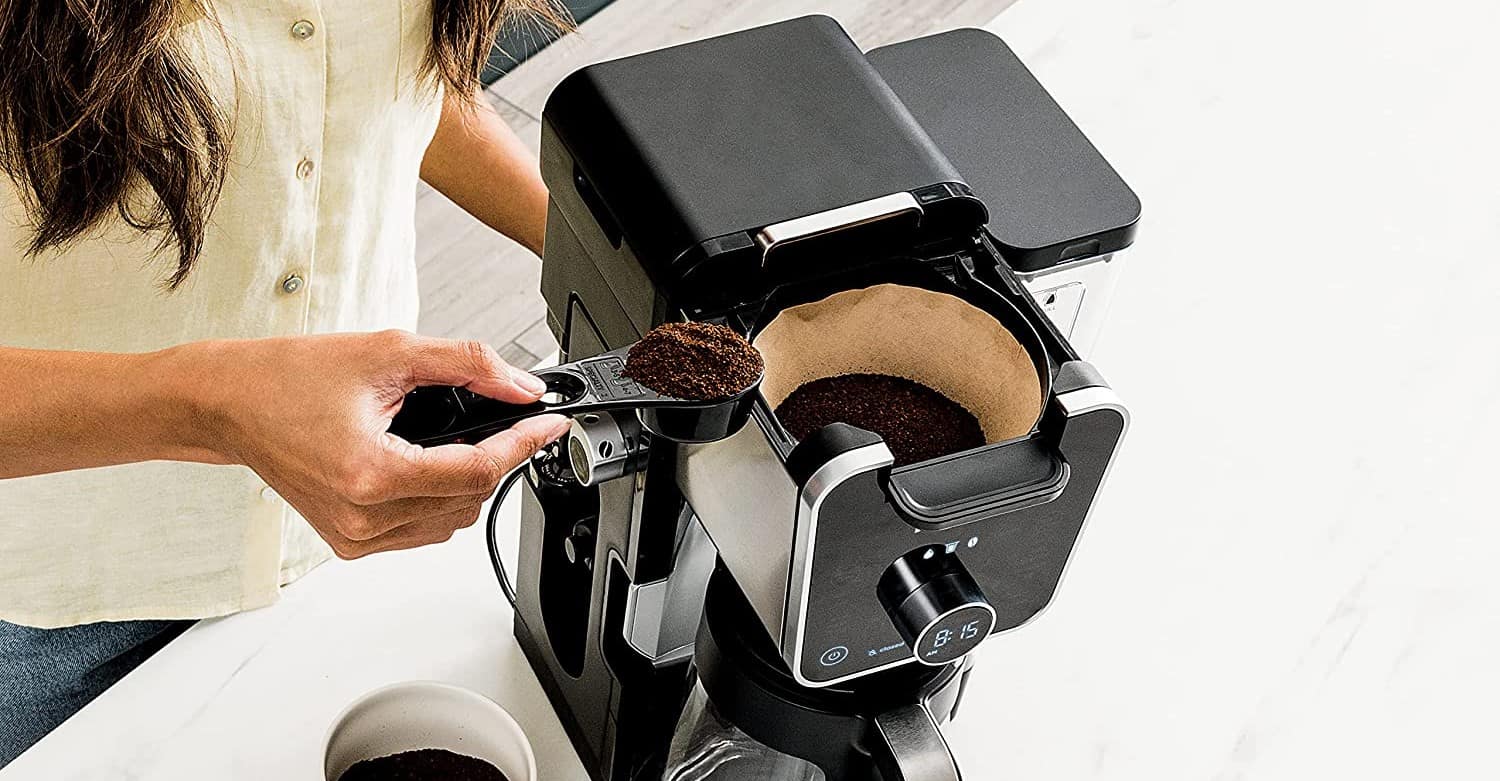

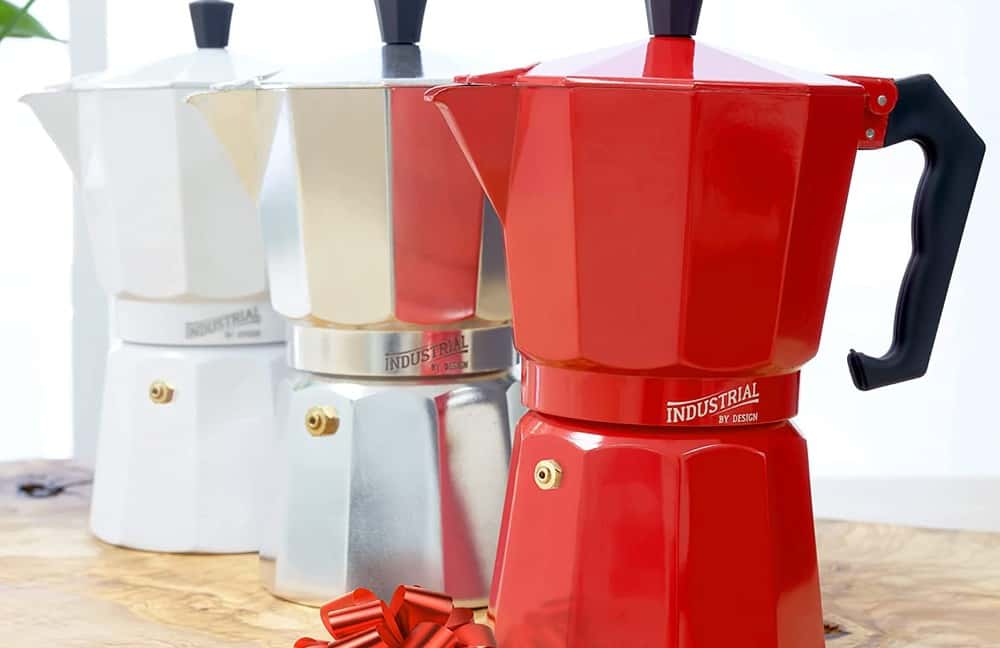


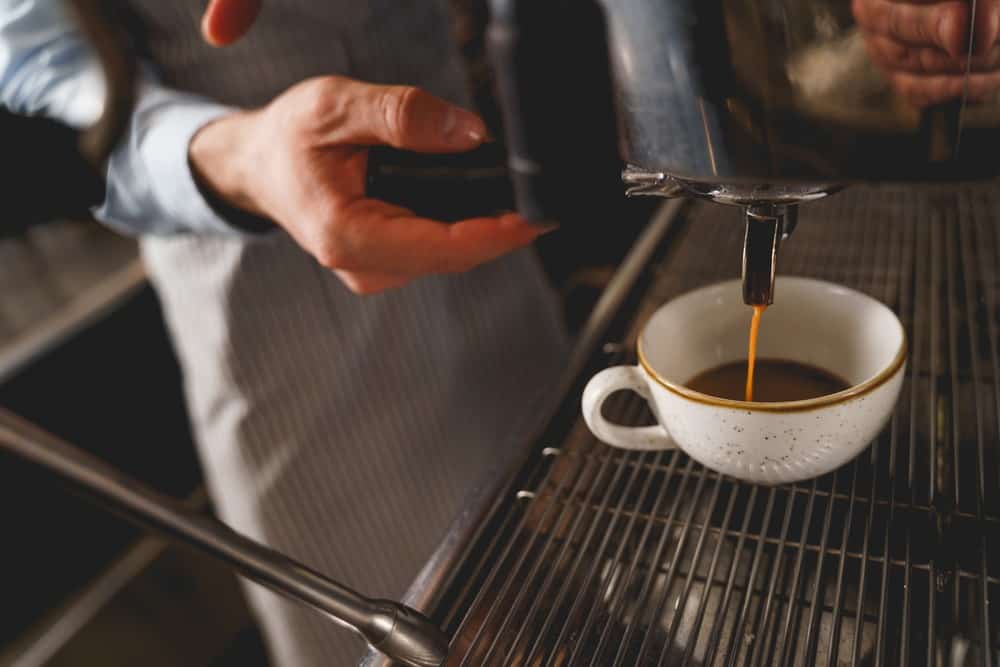
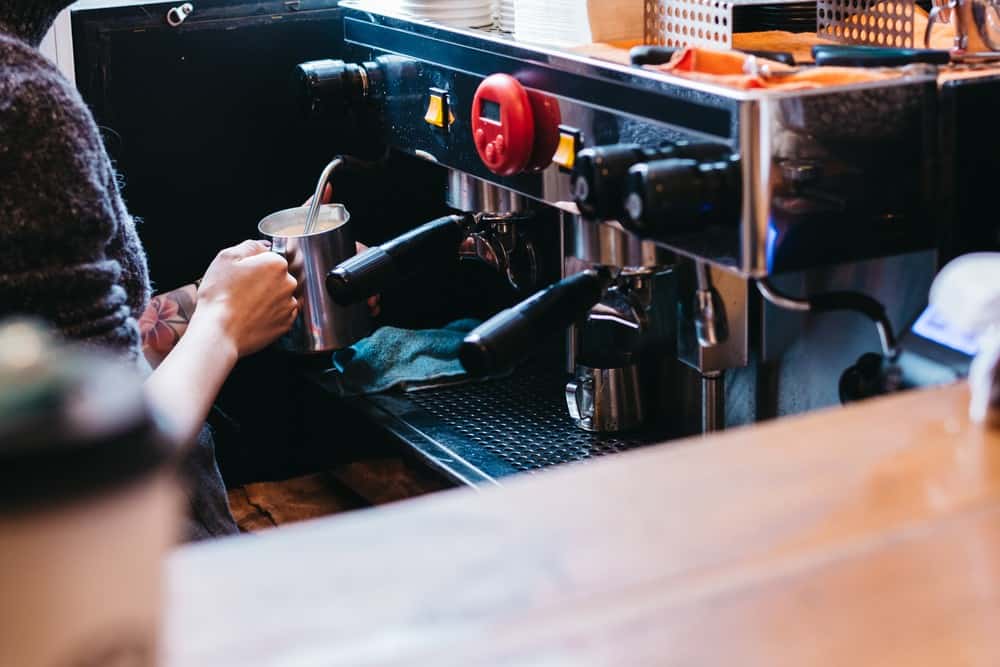
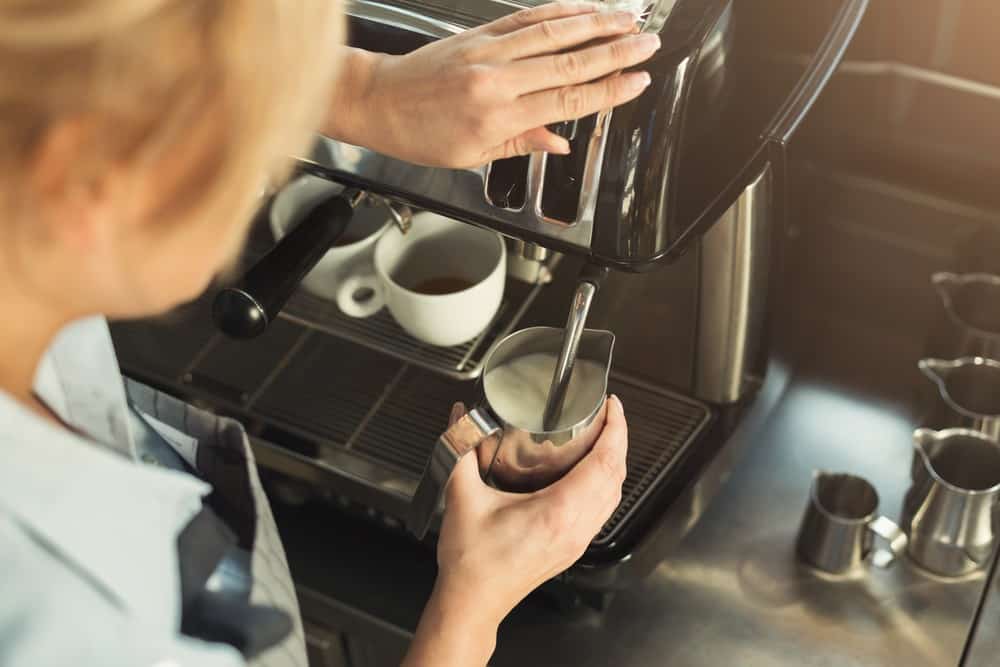

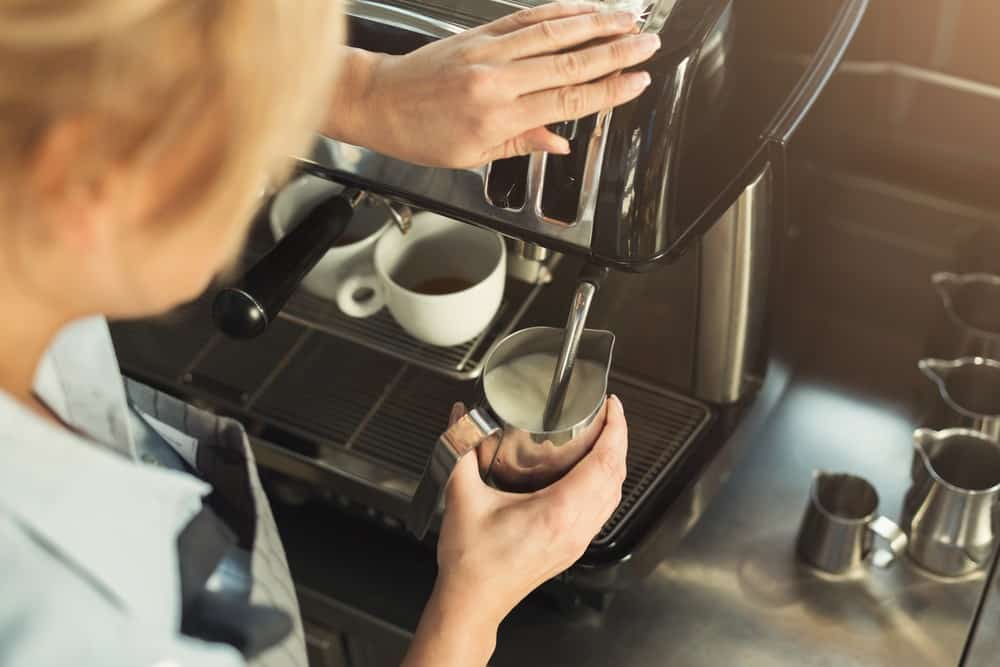

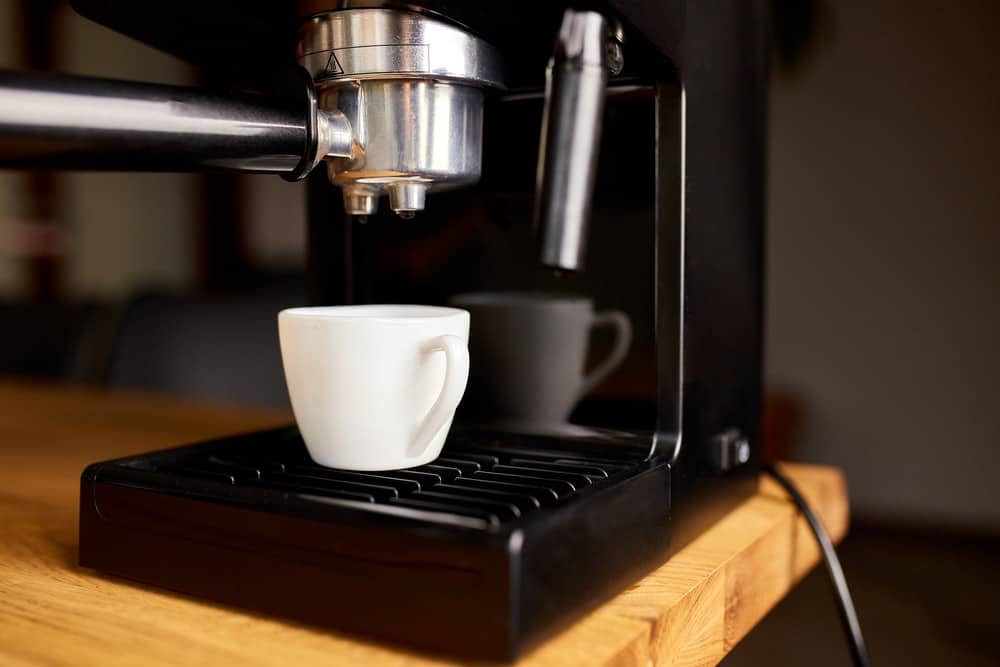
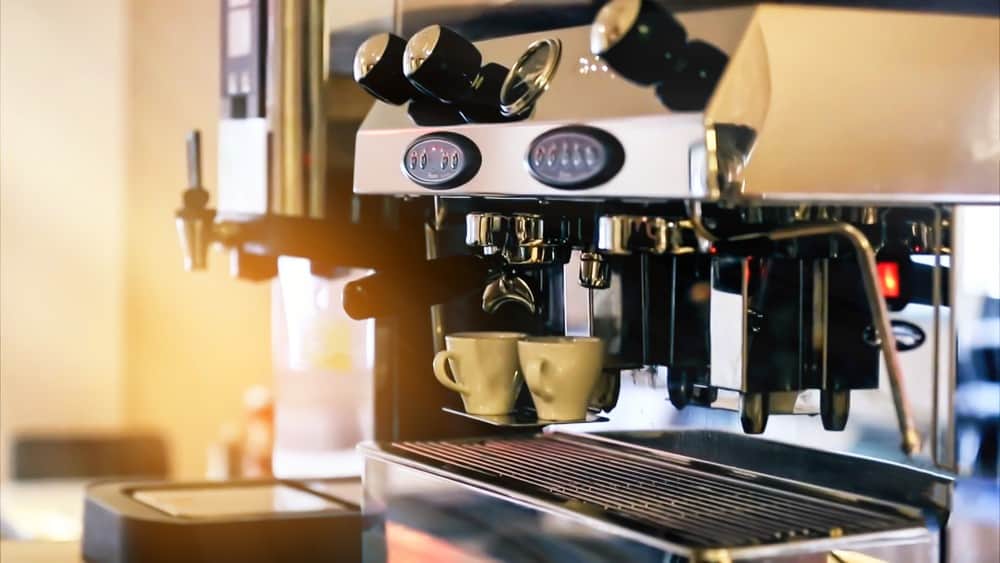
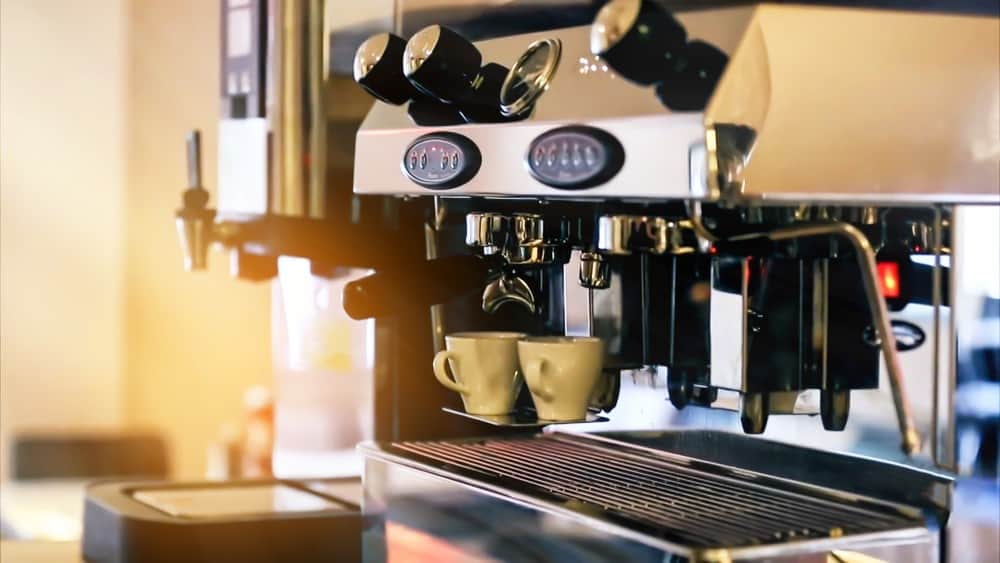
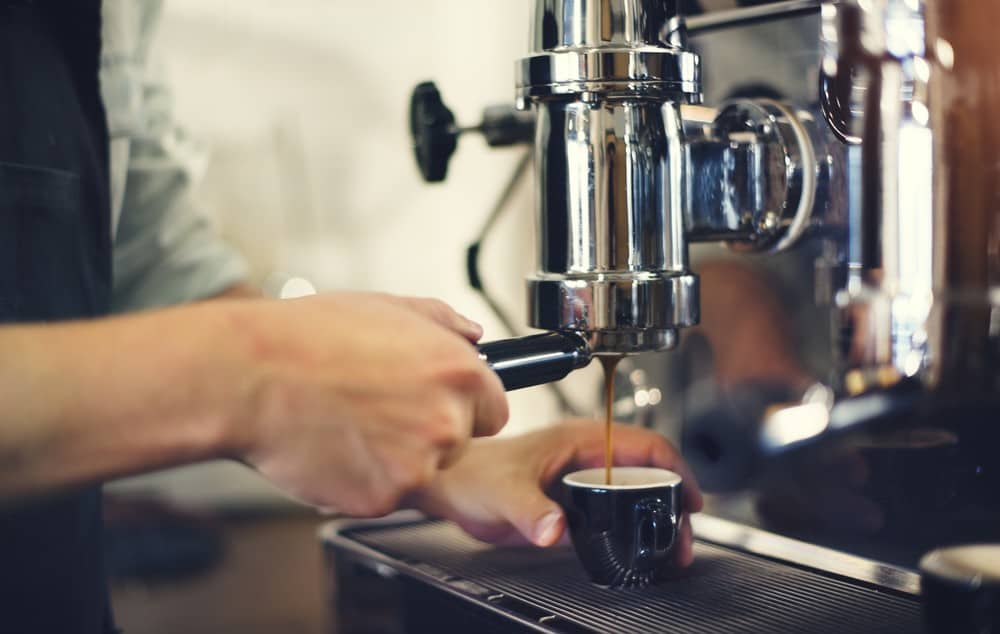
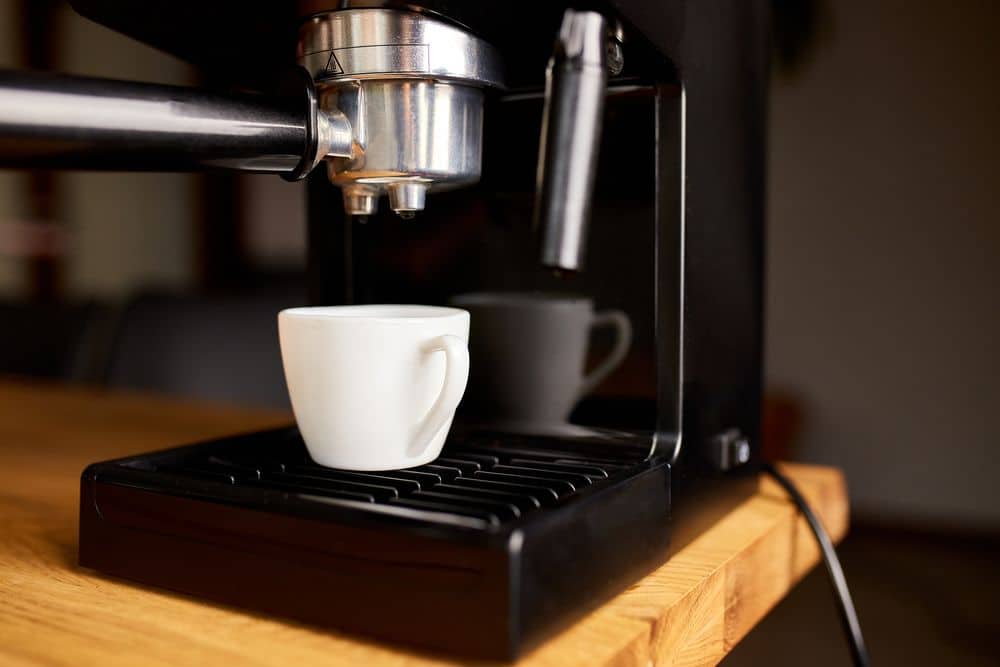
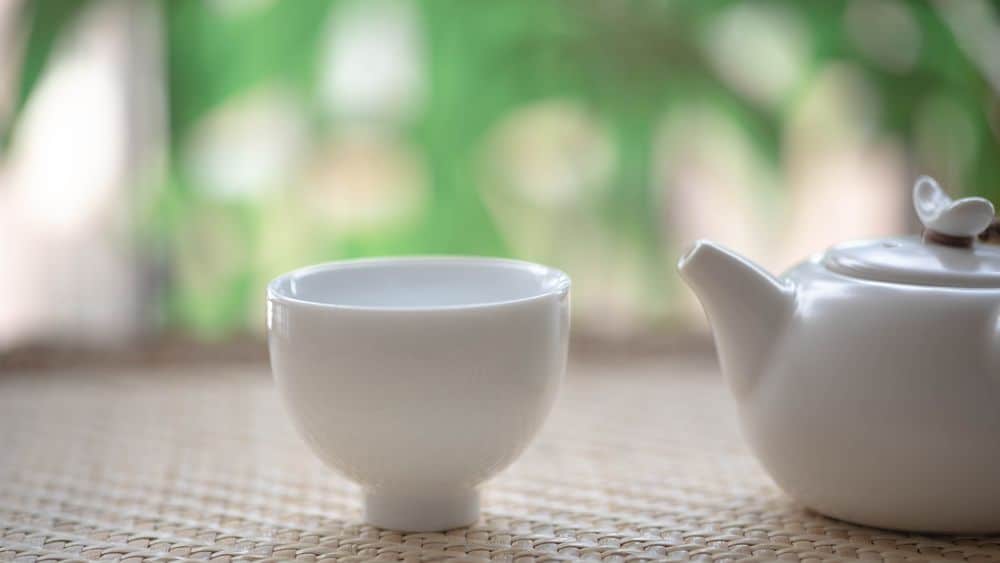
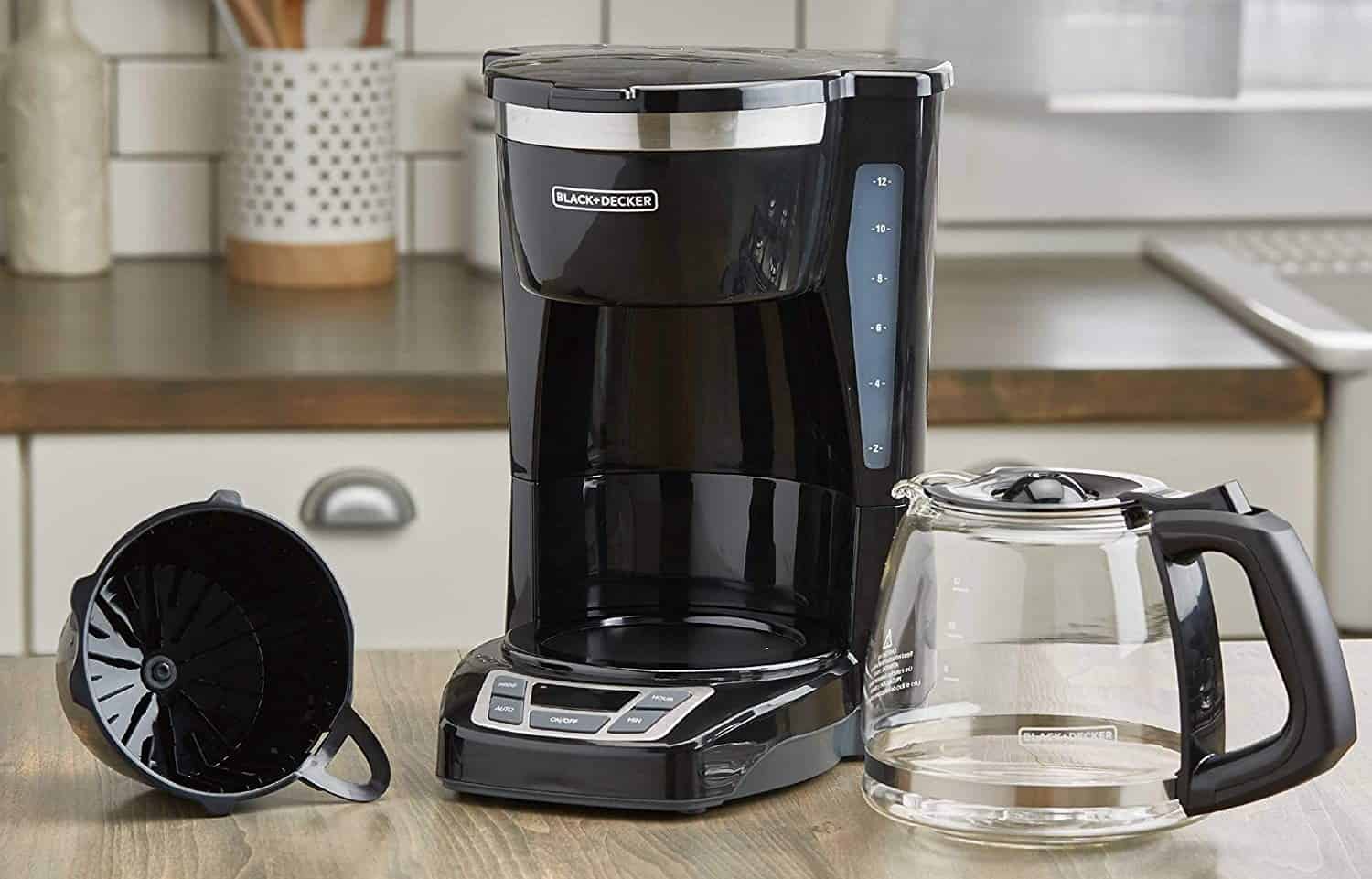
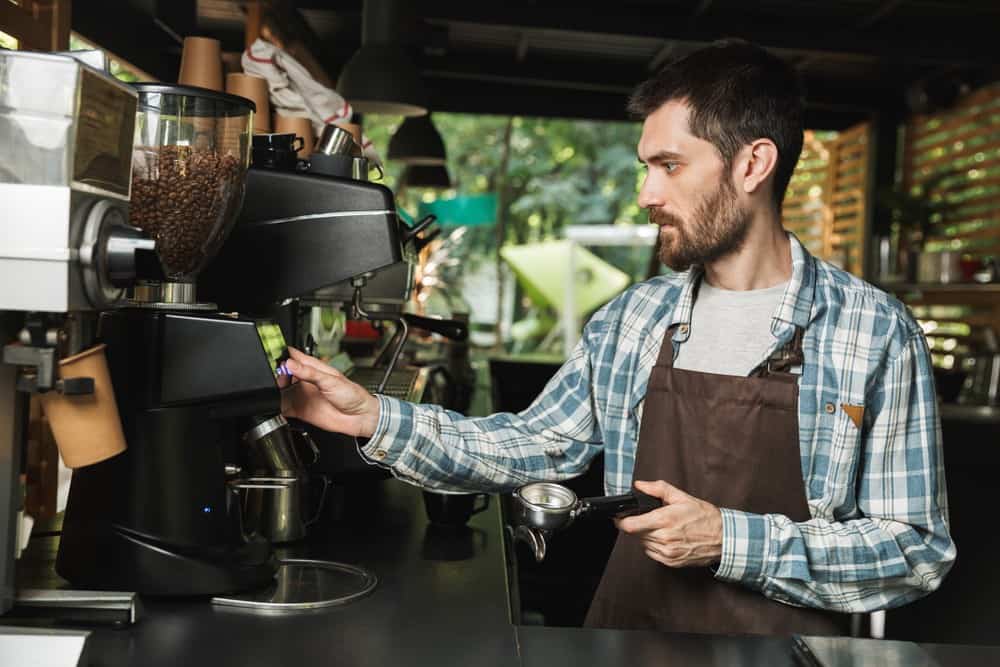
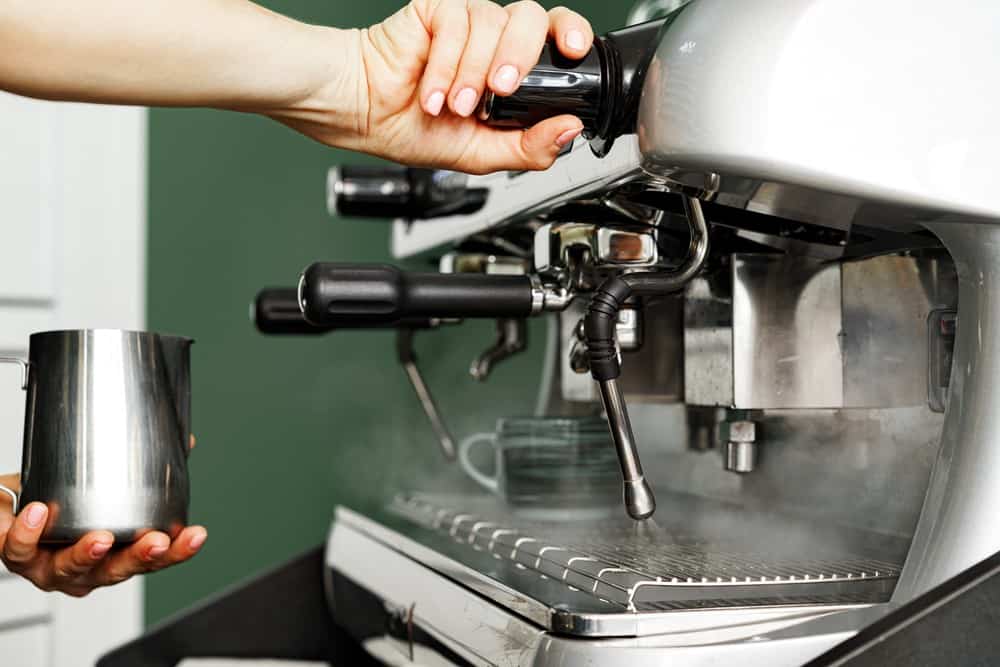
![Best Keurig Alternatives in [year] 34 Best Keurig Alternatives in 2025](https://www.gadgetreview.dev/wp-content/uploads/best-keurig-alternative-image.jpg)
![Best Semi Automatic Espresso Machines in [year] 35 Best Semi Automatic Espresso Machines in 2025](https://www.gadgetreview.dev/wp-content/uploads/best-semi-automatic-espresso-machine-image.jpg)
![Best Coffee and Espresso Makers in [year] 36 Best Coffee and Espresso Makers in 2025](https://www.gadgetreview.dev/wp-content/uploads/best-coffee-and-espresso-maker-image.jpg)
![Best Kitchen Appliances in [year] ([month] Reviews) 37 Best Kitchen Appliances in 2025 (April Reviews)](https://www.gadgetreview.dev/wp-content/uploads/best-kitchen-appliances.jpg)
![Best Dual Boiler Espresso Machines in [year] 38 Best Dual Boiler Espresso Machines in 2025](https://www.gadgetreview.dev/wp-content/uploads/best-dual-boiler-espresso-machine-image.jpg)
![Quietest Coffee Makers in [year] 39 Quietest Coffee Makers in 2025](https://www.gadgetreview.dev/wp-content/uploads/quietest-coffee-maker-image.jpg)
![Best Prosumer Espresso Machines in [year] 40 Best Prosumer Espresso Machines in 2025](https://www.gadgetreview.dev/wp-content/uploads/71ytF6efAlL._AC_SL1500_.jpg)
![Best Single Serve Coffee Maker No Pods in [year] 41 Best Single Serve Coffee Maker No Pods in 2025](https://www.gadgetreview.dev/wp-content/uploads/best-k-pod-coffee-image-1.jpg)
![Best Coffee Makers for Hard Water in [year] 42 Best Coffee Makers for Hard Water in 2025](https://www.gadgetreview.dev/wp-content/uploads/best-coffee-maker-for-hard-water-image.jpg)
![Best Coffee Makers for RV in [year] 43 Best Coffee Makers for RV in 2025](https://www.gadgetreview.dev/wp-content/uploads/best-coffee-maker-for-rv-image.jpg)
![Best Ninja Coffee Makers in [year] 44 Best Ninja Coffee Makers in 2025](https://www.gadgetreview.dev/wp-content/uploads/best-ninja-coffee-maker-image.jpg)
![Best Breville Espresso Machines in [year] 45 Best Breville Espresso Machines in 2025](https://www.gadgetreview.dev/wp-content/uploads/best-breville-espresso-machine-image.jpg)
![Best 5 Cup Coffee Makers in [year] 46 Best 5 Cup Coffee Makers in 2025](https://www.gadgetreview.dev/wp-content/uploads/best-5-cup-coffee-maker-image.jpg)
![Best Commercial Coffee Makers in [year] 47 Best Commercial Coffee Makers in 2025](https://www.gadgetreview.dev/wp-content/uploads/best-commercial-coffee-maker-image.jpg)
![Best Commercial Espresso Machine for a Small Coffee Shop in [year] 48 Best Commercial Espresso Machine for a Small Coffee Shop in 2025](https://www.gadgetreview.dev/wp-content/uploads/best-commercial-espresso-machine-small-coffee-shop-image.jpg)
![Best Coffee for Moka Pot in [year] 49 Best Coffee for Moka Pot in 2025](https://www.gadgetreview.dev/wp-content/uploads/best-coffee-for-moka-pot-image.jpg)
![Best USA Made Coffee Makers in [year] 50 Best USA Made Coffee Makers in 2025](https://www.gadgetreview.dev/wp-content/uploads/best-usa-made-coffee-makers-image.jpg)
![Fastest Coffee Makers in [year] 51 Fastest Coffee Makers in 2025](https://www.gadgetreview.dev/wp-content/uploads/fastest-coffee-maker-image.jpg)
![Best SCAA Certified Coffee Makers in [year] 52 Best SCAA Certified Coffee Makers in 2025](https://www.gadgetreview.dev/wp-content/uploads/best-scaa-certified-coffee-maker-image.jpg)
![Best Smart Coffee Makers in [year] 53 Best Smart Coffee Makers in 2025](https://www.gadgetreview.dev/wp-content/uploads/best-smart-coffee-maker-image.jpg)
